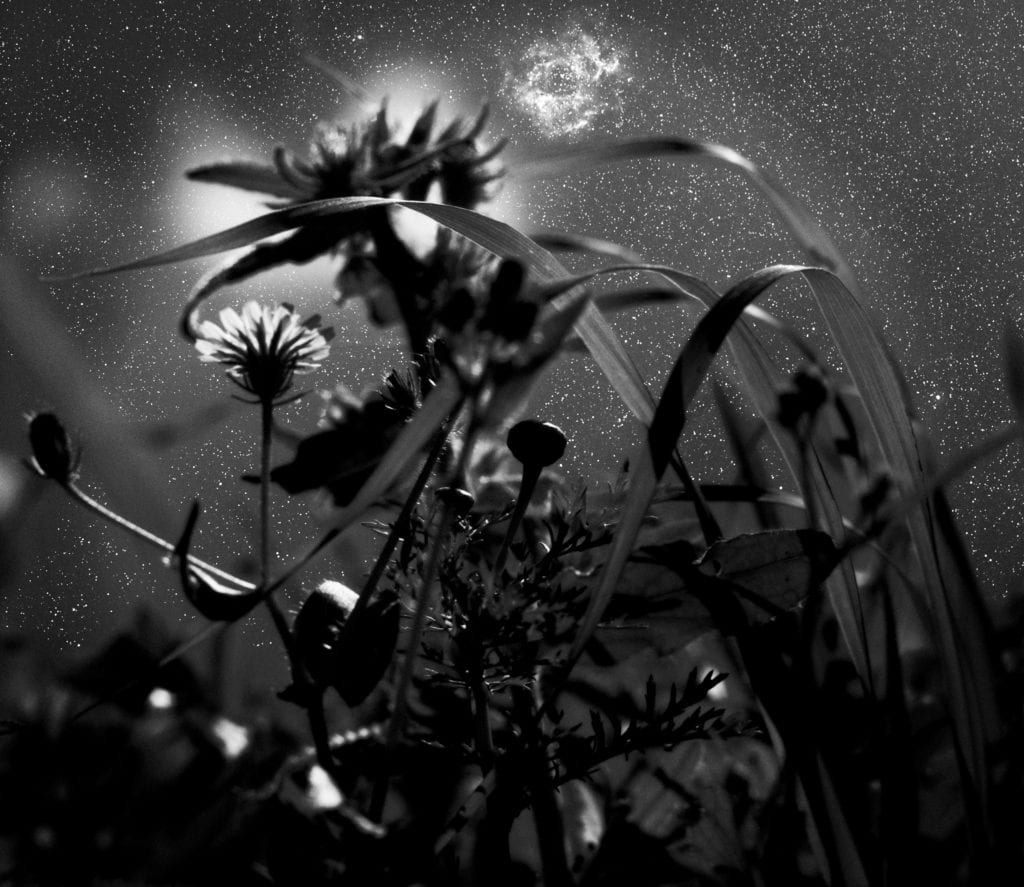
Gazing at the night sky
I believe that almost every person has looked up at the night sky – gazed at the stars – and dreamed about what is out there – or our relationship to the far reaches of space. It is a poetic, expansive and romantic idea. The Romantic Poets were specifically intrigued by this unknown and rich world. However, this is not an easy subject for photographers. The technical issues of low light make it very complicated to show both the earth and the sky. Neil Folberg’s “Celestial Nights” is a comprehensive body of silver gelatin print photographs that are rich, and magically evocative. Folberg created the series from 1997 to 2000.

From the coast of San Francisco to the desert of Israel
An American photographer, born in San Francisco in 1950, he studied initially with Ansel Adams and William Garnett. He has always had an interest in landscape. He moved to Israel in 1976 and has produced various challenging bodies of work. The landscape of the desert of Israel gave him the inspiration for this series. The nights in the desert do not have the light pollution of the cities. It is dark and the night sky is far brighter and more animated than we see.

Obstacles in the night
The camera acts as an extension of the eye during the day. Nighttime photography is far more complicated. The eye sees the stars and planets and hundreds of points of light in the sky – and the faint outlines of the landscape. But with standard film – if the exposure was set for the sky – you would not see any of the land. and if the exposure was set for the land the sky would be flooded with light. To compensate, Folberg seamlessly constructs each photograph to produce a composite image. He uses infrared and high speed film for the landscape – and a pan film that is very sensitive to light to capture the sky.

Drawing inspiration from the Sinai Desert
When asked what inspired the work Neil commented:
“The inspiration for that work came from spending hundreds of nights under dark skies in the Sinai Desert, where I was working from about 1979 to 1984. My way at night was lit by starlight on moonless nights. It was impossible to photograph this experience; film was not sensitive enough and in any case was simply unable to handle the range. Astronomers had been making tracked photographs of celestial objects for a century, but the human experience was of no interest to them. There had to be another way, so I invented it. I made long exposures of the sky, as my camera tracked while it was piggybacked on the back of a telescope. I combined those images with images made of the land. Now the terrestrial could be combined with the celestial. That is the human experience. We look up. We wonder. We imagine.”

The majesty of the cosmos
Often photography deals with issues of reality and unreality in a nuanced way. Folberg wanted to capture what inspired him – and has inspired countless other people. However creative invention became the necessary tool to recreate the mystery and wonder that he beheld. The pictures that were made for the Celestial Nights project are predated by two decades of society’s renewed interest in launching rockets into space. Our planet is but a spec in terms of cosmic space. We are one of an infinite number of planets. In trying to understand what and who we are we often broaden our horizons. When we do – if we cast our gaze far enough the heavens seem to dance with a potential energy and mystery. In Celestial Nights we look at both timeless landscapes and night skies that keep us guessing about the majesty of the cosmos.

